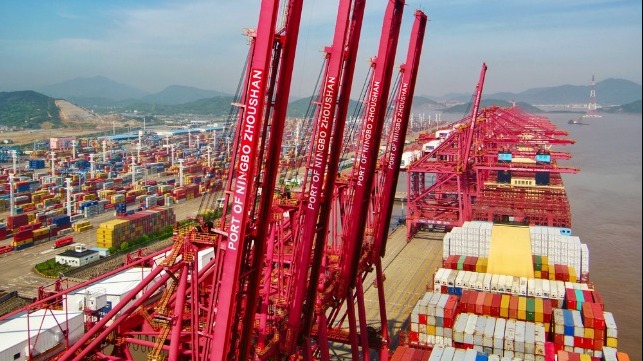Disruptions at Ningbo-Zhoushan Port as Employee Tests COVID Positive

Overstretched global supply chains face the risks of further disruptions after an employee at the world’s busiest cargo port tested positive for COVID-19. Operations at China’s Ningbo-Zhoushan port have been thrown into crisis after a 34-year worker tested positive for the virus, a development that could instigate worsening global supply chain disruptions as port authority and health officials seek to contain further spread.
Reports from the Ningbo-Zhoushan port in east China's Zhejiang Province indicate that all close contacts of the employee have been quarantined, with the sites involved suspending work and being disinfected. There are also reports that port authorities are turning away ships.
Ningbo-Zhoushan is one of China's busiest ports, especially popular for 100,000-ton class ships. The combined ports boasts of more than 100 berths for 50,000-tons ships. While Shanghai is China's busiest container port, Ningbo-Zhoushan is the second-busiest container port having handled over 16 million TEU in the first half of 2021. It is overall the largest cargo port in China, and while cargo volumes were down slightly in the first half of 2021, it handled a total of 623 million tons of cargo n the first six months of this year. The total cargo throughput at the port in 2020 was up nearly five percent to 1.2 billion tons of cargo.
Emergence of COVID-19 case at the world’s busiest port comes when China is tightening COVID-19 measures following the resurgence of the pandemic across the country, with eastern provinces being the worst hit. The resurgence in infections is being attributed to the highly transmissible delta variant. The country’s National Health Commission reported 143 new cases in mainland China on Monday, the highest number of daily infections since January with 108 being locally transmitted. The first cases of China's current outbreak were detected on July 20 in the eastern city of Nanjing.
To contain the spread, China has ordered mass testing, with port authorities also required to ensure ship crews and port workers are also tested. Shipping companies and industry stakeholders are warning the latest COVID-19 outbreak in China risks exacerbating an already worse situation in global supply chains that is grappling with port congestion, container shortage and rising costs, including service disruption surcharges being imposed by shipping lines.
“The impact of vessel delays is by far the largest single element causing the severe capacity shortage, driving up freight rates in the market presently,” said Alan Murphy, Sea-Intelligence CEO.
COVID-19 disruptions at Ningbo-Zhoushan port is likely to have substantial ripple effects on global trade owing to the fact that it is one of the busiest ports in China. The port operates 260 container shipping routes, including over 100 routes servicing the Road and Belt initiative.
In May and June, the port of Yantian experienced a surge COVID-19 cases that took a month to fully control. During that time containers piled up and ports across the region became backlogged. There were also significant impacts on all the major carriers with extended wait times or ships rerouting skipping calls in the region.
